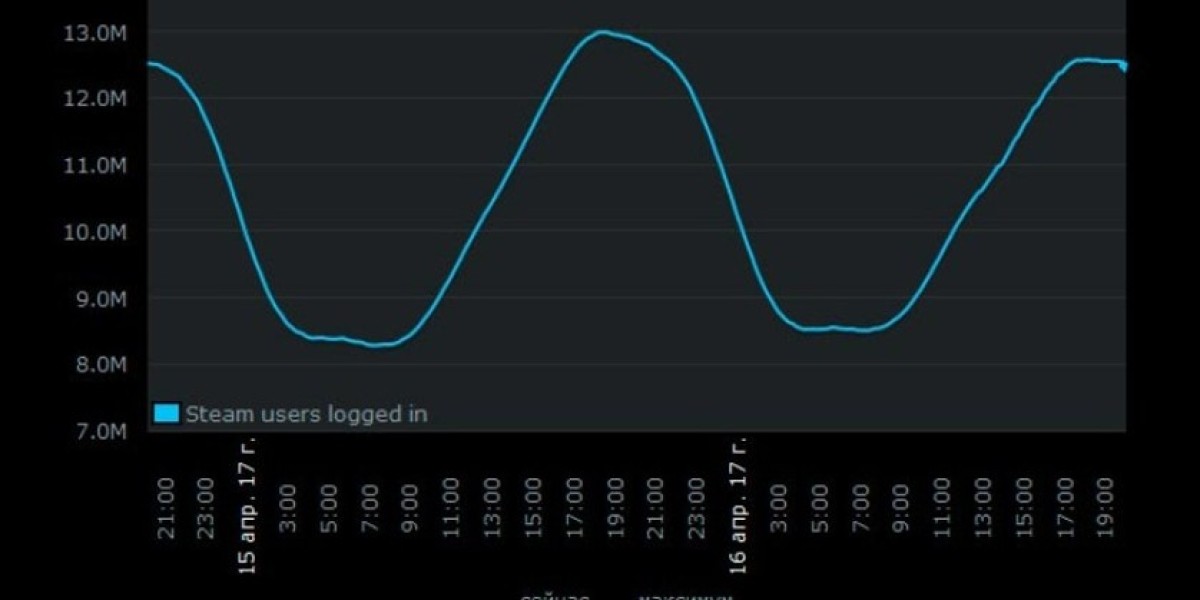In the world of aquatic biology and fisheries management, tracking individual fish through their life cycles is crucial for understanding migration patterns, survival rates, and population dynamics. This is where PIT tagging protocols come into play, offering a reliable, non-invasive method to monitor fish without constant human interference. For researchers studying endangered species or hatchery operators aiming to optimize stocking programs, implementing effective PIT tagging protocols can make all the difference in data accuracy and animal welfare. If you're looking to source high-quality equipment, explore options for Pit tags that meet industry standards.
Whether you're a seasoned ichthyologist or a hatchery manager new to biotelemetry, mastering these protocols ensures your work contributes to conservation efforts while minimizing stress on the fish. In this comprehensive guide, we'll dive into the fundamentals, step-by-step best practices, real-world applications, and tips to overcome common hurdles—all backed by scientific insights and expert recommendations.
Understanding PIT Tags: The Foundation of Effective Tracking
PIT tags, or Passive Integrated Transponder tags, are tiny electronic devices, roughly the size of a grain of rice, encased in biocompatible glass. They contain a unique identification code that can be read wirelessly by an antenna when the fish passes nearby, powered by the reader's electromagnetic field rather than an internal battery. This makes them durable, lasting over 20 years in most environments, and ideal for long-term studies in freshwater and saltwater systems alike.
Introduced in the 1980s, PIT tags revolutionized fisheries research by allowing scientists to track individual animals without the need for external attachments that could snag or cause injury. In hatcheries, they facilitate mass marking of juvenile fish for release programs, helping managers assess which stocks contribute most to wild populations. According to NOAA Fisheries, over 35 million PIT tags have been implanted in salmon and steelhead in the Columbia River Basin alone since the technology became standard 25 years ago, providing invaluable data for restoration projects like dam modifications and habitat rehabilitation.
The appeal lies in their simplicity: no surgery scars if implanted correctly, and they don't interfere with natural behaviors like swimming or feeding. However, success hinges on adhering to standardized protocols to ensure high retention rates—typically 93% to 100% in well-executed studies—and negligible effects on fish health. For instance, a meta-analysis of tagging effects on juvenile salmonids emphasized that maintaining an appropriate tag-to-fish size ratio (e.g., tags no larger than 2% of body weight) is key to avoiding growth suppression or increased mortality.
Why PIT Tagging Protocols Matter for Researchers and Hatcheries
For researchers, PIT tags enable precise data collection on migration routes, smolt-to-adult survival, and environmental impacts. In the Pacific Northwest, PIT tag data has informed decisions to spill water over dams during peak migration, boosting juvenile salmon survival by up to 10-15% in some years. Hatcheries, on the other hand, use them for broodstock management and evaluating release strategies. A study on Chinook salmon in the Snake River basin analyzed data from 58,447 tagged fish, revealing that hatchery-released individuals had a 20% higher return rate when tagged early in development, underscoring the protocol's role in refining operations.
Beyond science, these protocols align with ethical standards from organizations like the American Fisheries Society, which stress minimizing animal suffering. Poorly executed tagging can lead to tag expulsion rates as high as 15% or stress-induced mortality, but following guidelines drops these risks dramatically. This not only improves data reliability but also supports sustainable aquaculture practices amid growing demands for traceable, eco-friendly fish products.
Step-by-Step Best Practices for PIT Tagging Protocols
Implementing robust PIT tagging protocols requires meticulous planning across preparation, execution, and follow-up. Drawing from guidelines by the Idaho Department of Fish and Game and USGS, here's a detailed breakdown tailored for both lab-based researchers and high-volume hatchery settings.
1. Pre-Tagging Preparation: Setting the Stage for Success
Start with a thorough health assessment of your fish population. Exclude individuals showing signs of disease, injury, or distress—conditions like Bacterial Kidney Disease can amplify tagging stress, potentially doubling short-term mortality. Use dark, plastic containers for transport and holding to reduce skittishness; avoid metal ones that might leach toxins.
Equipment is equally critical. Sterilize injectors and tags using 70-80% ethyl alcohol for at least 10 minutes between uses. Opt for 12-gauge veterinary-grade needles, sharpened to a fine point to minimize tissue trauma—dull needles can increase shedding by up to 5-10%. For hatcheries handling hundreds of fish daily, set up semi-automated stations with recirculating anesthetic systems and data-entry software linked to PIT tag readers. Solar-powered setups work well for field researchers at remote sites, ensuring consistent power without grid reliance.
Select tag size based on fish length: 8-9 mm for juveniles under 80 mm, 12 mm for larger ones. Always test your reader with a sample tag to confirm functionality before starting.
2. Anesthesia: Ensuring Humane and Effective Immobilization
Anesthesia is non-negotiable to prevent injury to both fish and handlers. The gold standard is Tricaine Methanesulfonate (MS-222), neutralized to pH 7 and dosed at 40 mg/L, adjusted for species and temperature—salmonids tolerate less than more resilient species like trout. Clove oil serves as a natural alternative at 50-100 mg/L, but verify regulatory approval in your region.
Induction should take 1-3 minutes: fish exhibit slowed operculum movement and loss of equilibrium without gill distress. For mass tagging in hatcheries, anesthetize 30-100 fish at once in a flow-through bath, but limit exposure to 5 minutes max. Monitor constantly—add fresh water if breathing slows to avoid over-anesthetization, which can spike mortality by 20% in sensitive juveniles.
Recovery begins immediately post-tagging in oxygenated tubs (aim for 8-10 mg/L dissolved oxygen). Full equilibrium should return within 5 minutes; if not, dilute your next batch.
3. Implantation Technique: Precision to Promote Retention
Proper site selection and insertion technique are where many protocols falter, but getting it right yields retention rates exceeding 95%. The preferred method is intraperitoneal injection into the body cavity: position the fish belly-up, insert the needle between the pectoral and pelvic fins, 1-2 mm off the midline at a 45-degree angle. Jab quickly but gently, advancing 2/3 of the needle length before deploying the tag with the pushrod.
For dorsal muscle sites—useful for smaller fish—aim between the lateral line and dorsal fin, parallel to the body axis to avoid organs. In a study on lumpfish juveniles, this method showed no significant growth impact and 100% retention after 55 days. Always use trained personnel; inexperience can double expulsion risks.
In hatcheries, streamline with assembly-line workflows: one person anesthetizes, another injects, a third scans and records. Researchers in the field might tag singly, prioritizing data validation on-site.
4. Post-Tagging Care and Monitoring: The Often-Overlooked Phase
Don't stop at insertion—post-care determines long-term success. Transfer tagged fish to shaded, aerated recovery tanks with low flow to prevent dislodgement. Observe for 24-48 hours, checking for infection signs like lethargy or fin erosion. Periodic scans at 30, 90, and 180 days help track retention; one Atlantic salmon study reported 91% retention after 533 days with this vigilance.
For detection efficiency, install antennas strategically at migration bottlenecks. USGS guidelines recommend multi-array setups to boost read rates from 70% to over 90%, especially in turbulent waters. Integrate with databases like PTAGIS for seamless data sharing across studies.
Tailored Protocols: Researchers vs. Hatcheries
Researchers often focus on controlled experiments, tagging smaller cohorts (e.g., 50-200 fish) to study behaviors like predator avoidance. Emphasize variability controls: tag half your sample as a control group and compare growth metrics. In one USGS-backed project on humpback chub, standardized PIT tagging protocols revealed 98% survival post-release, informing endangered species recovery.
Hatcheries, dealing with thousands, prioritize efficiency. Mass-marking trailers with automated injectors can tag 1,000+ fish per day, but rotate personnel to avoid fatigue-induced errors. A NOAA report on Pacific salmon hatcheries noted that protocol adherence reduced tagging mortality from 5% to under 1%, enhancing overall program ROI.
Common Challenges and Solutions in PIT Tagging
Even with best practices, issues arise. Tag shedding peaks in the first month if incisions heal poorly—solution: use surgical glue for high-risk species. Small fish (<60 mm) face higher expulsion (up to 7%), so opt for half-size tags or delay tagging until growth.
Environmental factors like high temperatures (>20°C) amplify stress; tag during cooler seasons or use chillers. Ghost tags—expelled but still detectable—can skew data; USGS models help classify live vs. ghost detections with 95% accuracy.
Cost is another hurdle: tags run $0.50-$2 each, but bulk purchases and reusable equipment cut expenses. Training via workshops from Biomark or PTAGIS ensures compliance.
Real-World Case Studies: Data-Driven Insights
Consider the Columbia River's PIT tag program: analyzing millions of detections, scientists found that tagged steelhead smolts had 85% detection efficiency at dams, guiding spillway adjustments that saved thousands of fish annually. In a European sandeel study, PIT tagging showed no hematocrit changes or swimming impairments, with 100% retention in tagged vs. control groups, validating protocols for small-bodied fisheries.
Closer to home, a 2022 meta-analysis across 20 studies confirmed PIT tags' minimal mortality impact (average 2% excess), but stressed species-specific tweaks—like shallower angles for cyprinids. These examples highlight how protocols translate to actionable conservation wins.
Conclusion: Elevating Your PIT Tagging Game
Mastering PIT tagging protocols empowers researchers and hatcheries to generate trustworthy data while upholding fish welfare. By prioritizing preparation, precise technique, and diligent monitoring, you can achieve retention rates above 95% and support thriving aquatic ecosystems. As fisheries face climate pressures, these tools will only grow in importance—invest in training and quality gear today for tomorrow's breakthroughs.
For more on sustainable practices, check our related posts on fish migration tracking and hatchery optimization strategies.







